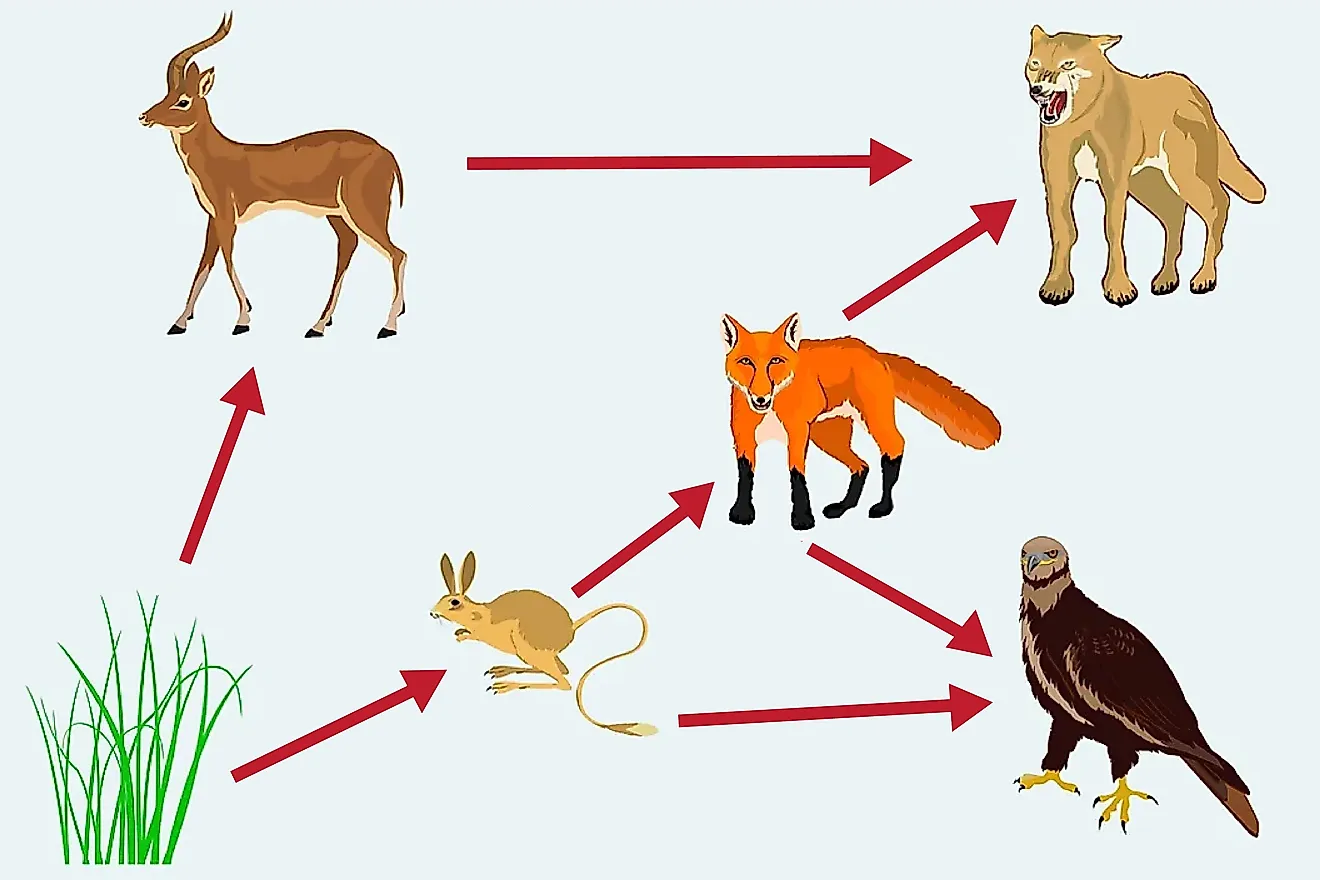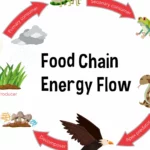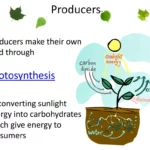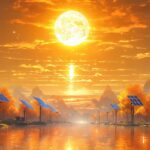Let’s dive into the world of primary producers, the unsung heroes of our planet. They’re like the engines that power our ecosystems, creating the food that keeps us all alive. From the tall trees in our forests to the tiny algae in the sea, these organisms have a knack for transforming sunlight into energy, which they then use to produce their own food. And guess what? Their leftovers are what feed the rest of the food chain, from tiny insects to massive whales. So, let’s give a round of applause for these incredible life forms that make our planet a thriving place!
Which Organism is an Example of a Producer?
Ever wonder how life on Earth even works? It’s like a giant puzzle, and at the very bottom of it all are the producers – the real MVPs of the ecosystem party!
These amazing organisms have this superpower: they can make their own food! No need for takeout here. They soak up sunlight and, through the magic of photosynthesis, transform it into energy. Think of them like living, breathing solar panels, fueling themselves and, as a bonus, releasing the oxygen we breathe. Pretty neat, right?
So, who are these incredible beings? Let’s meet a few:
- Plants: From towering redwoods to the softest mosses, plants are the rockstars of the producer world. They’re everywhere, using sunshine to create their own food and painting the world green.
- Cyanobacteria: Don’t let the name fool you – these guys are like tiny superheroes! They’re actually bacteria, but they can do photosynthesis just like plants. You’ll find them hanging out in water, adding a splash of blue-green to their surroundings and pumping out oxygen.
- Phytoplankton: These little guys are like the unsung heroes of the ocean. They’re microscopic, drifting through the water and forming the base of the entire marine food web. Without them, fish, whales, and all those cool ocean creatures wouldn’t have much to eat!
But wait, there’s more! Some producers take the road less traveled. Instead of sunlight, they use chemical energy from their surroundings to make food. These are the chemoautotrophs, like certain bacteria living around deep-sea volcanic vents. Talk about living on the edge!
Producers might not always get the spotlight, but they’re the foundation of every food chain. They’re the reason herbivores can graze and carnivores can, well, carnivore. Without them, life as we know it would simply cease to exist. So, next time you see a plant, a patch of algae, or even just take a deep breath of fresh air, take a moment to appreciate the power of producers!
what is a producer science is an organism that makes its own food. producer consumer decomposer
Examples of Producers: – Plants: The Green Architects of Life (Types)
We’ve talked about how crucial primary producers are, acting like the backbone of any ecosystem, but who are these vital players? They’re the ones turning lifeless compounds into the building blocks of life – the food that keeps everything else going. Think plants, algae, even some bacteria – all superstars in the making of a living planet.
Plants: Turning Sunlight into Snacks
On land, plants are the dominant heroes, wielding their green magic called photosynthesis. Picture them soaking up sunshine, taking in carbon dioxide from the air, and tapping into water sources. With these simple ingredients, they craft glucose – the energy snack that fuels life as we know it. From towering trees to tiny blades of grass, they’re the planet’s ultimate chefs!
Algae: The Unsung Aquatic Heroes
But what about the watery realms? That’s where algae, in all their diverse forms, take center stage. These powerhouses underpin the food chains of oceans, lakes, and rivers. Everything from minuscule zooplankton to massive whales ultimately depends on the energy algae provide. They are the invisible foundation of a healthy aquatic world.
Chemosynthesis: Life in the Dark
Now, imagine a world without sunlight, like the deep ocean floor. It’s here that chemosynthetic bacteria showcase their incredible adaptability. Instead of relying on sunlight, they tap into the energy stored in inorganic chemicals spewing from hydrothermal vents. These bacteria prove that life finds a way, even in the most extreme environments.
Let’s recap the amazing world of producers:
| Type of Producer | Location | Energy Source | Examples |
|---|---|---|---|
| Plants | Land | Sunlight | Trees, flowers, grasses |
| Algae | Water | Sunlight | Seaweed, kelp, phytoplankton |
| Chemosynthetic Bacteria | Extreme environments (like deep-sea vents) | Inorganic Chemicals | Sulfur bacteria, hydrogen bacteria |
These incredible organisms, often overlooked, are the foundation upon which all other life forms depend. Next time you see a plant, a patch of algae, or even just imagine the unseen world of chemosynthetic bacteria, take a moment to appreciate their vital role in keeping our planet alive and thriving.
Photosynthesis Process – Algae: The Microscopic Powerhouses (Types)
These tiny aquatic plants, algae, are like the hidden heroes of our planet! While we might not always see them, they’re busy soaking up sunlight and turning it into energy, just like plants on land. This incredible process, called photosynthesis, is how they make their own food, and it’s a big deal for the rest of us too.
Think of algae as the ultimate recyclers. As they photosynthesize, they use up carbon dioxide, which is a greenhouse gas, and release oxygen back into the water and air. This oxygen is what we breathe, and it’s essential for life on Earth. Plus, algae become food for lots of creatures in the water, making them a vital part of the food chain.
Scientists are fascinated by algae and their potential. Imagine using their incredible photosynthetic powers to create biofuels, healthy food supplements, and even new medicines! Researchers are hard at work, trying to unlock the secrets of algal photosynthesis to make these dreams a reality. It’s like discovering a hidden treasure chest of possibilities, all thanks to these tiny, mighty powerhouses!
Cyanobacteria: The Ancient Pioneers (Evolutionary Significance)
These tiny powerhouses, the cyanobacteria, have been around for a mind-boggling 3 billion years! Imagine all the changes they’ve witnessed on Earth! As the original “sun eaters,” they don’t just feed themselves – they’re the foundation of countless food webs. How? They’ve mastered the art of turning sunlight and carbon dioxide into food, sharing the bounty with other hungry organisms. From freshwater ponds to scorching deserts, these adaptable survivors show up everywhere, proving their toughness over eons.
But here’s where things get really interesting. Remember breathing? Thank cyanobacteria! Their early photosynthesis pumped out oxygen, changing the very air we breathe during the Great Oxidation Event. Scientists are like detectives, using comparative genomics to piece together the cyanobacteria’s evolutionary story. Through their research, we’re discovering the secrets behind their incredible resilience in the face of a changing planet. It’s a testament to their importance in keeping life on Earth thriving, even billions of years later.
FAQ
Q1: What are Producers?
A1: Producers are organisms that can make their own food or energy, forming the foundation of food chains and ecosystems.
Q2: What are the Types of Producers?
A2: The two main types of producers are photoautotrophs, which use sunlight to produce food, and chemoautotrophs, which use chemical energy.
Q3: Why are Producers Important?
A3: Producers are vital for sustaining life on Earth as they produce the biomass that supports all other organisms in the food chain. They also play a crucial role in regulating Earth’s climate and atmospheric balance.
Q4: What are Examples of Producers?
A4: Plants, algae, cyanobacteria, and chemosynthetic bacteria are examples of producers, each playing unique roles in diverse ecosystems.
Q5: How are Producers Involved in the Food Chain?
A5: Producers form the base of food chains, providing food for herbivores, which are then consumed by carnivores. This energy flow supports the entire ecosystem.
- Discover Long Black Pepper: Flavor & Health Benefits - April 25, 2025
- Shocking Twists: The Grownup Review: Unreliable Narration - April 25, 2025
- A Quiet Place Book vs Movie: A Deep Dive - April 25, 2025

















Comments are closed.